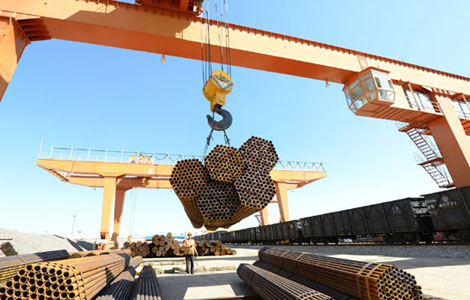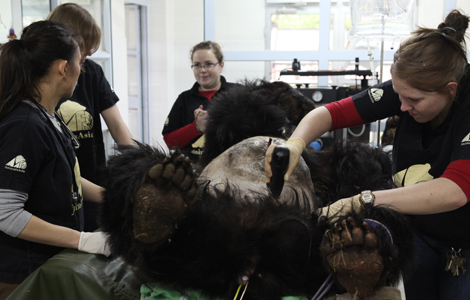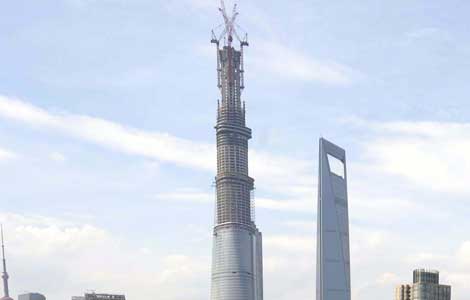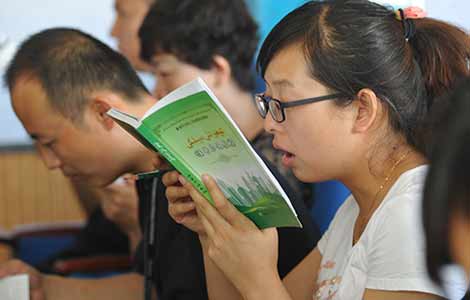Guangdong plans for growth with rural focus
Updated: 2013-08-09 07:34
By Zheng Caixiong in Guangzhou and Li Wenfang in Zhanjiang (China Daily)
|
||||||||
The Guangdong provincial government recently earmarked more than 672 billion yuan ($109.75 billion) to develop the mountainous western, eastern and northern parts of the region over the next five years.
The provincial government hopes the rural economic development plan will help these areas grow to support an increasingly overcrowded Pearl River Delta region, one of China's main hubs of economic growth.
It also hopes that companies and industries in the Pearl River Delta will consider moving to rural parts.
The investments will mainly focus on the construction of railways and highway networks to connect the rural areas with the Pearl River Delta, which borders the Hong Kong and Macao special administrative regions, as well as a number of economic development zones.
Hu Chunhua, Party chief of Guangdong province, said once the rural areas develop economically after a few years, they will provide the province with two economic engines for growth.
"The provincial government will continue to spare no effort to introduce new and preferential measures for economic growth in the mountainous regions, and it is a development strategy of the Guangdong provincial government to develop the rural economy in the following years," Hu told a work conference in the provincial capital of Guangzhou earlier this week.
Liu Xiaohua, Party secretary of Zhanjiang in western Guangdong's Leizhou peninsula, said the provincial government has already worked to create business opportunities in the city. It recently approved the construction of a major steel plant, a petrochemical project and a number of infrastructure facilities.
"The provincial government wants Zhanjiang to become a major competitive modern port city, a model city of the country's oceanic economy, a pilot area to expand economic ties with the Association of Southeast Asian Nations and a metropolis in western Guangdong," Liu said.
He urged business representatives from home and abroad to explore investment and trade opportunities in Zhanjiang. One of the major targets for the provincial development plan for Guangdong's western, eastern and northern areas is foreign investment.
The provincial government also plans to build a number of key prefecture-level cities, each estimated to have a population of more than 1 million, as well as a large number of towns each with a population of around 500,000 to help escalate urbanization in rural areas, according to the development plan.
Lin Jiang, a professor from Sun Yat-sen University in Guangzhou, said improving infrastructure in these rural areas, which have an abundance of land, natural resources and skilled workers, will help attract investment and high-tech expertise.
"(The investments) indicate that the provincial government is making greater efforts to develop the rural economy, to help balance economic development between the Pearl River Delta and mountainous areas," he said.
Chen Hongyu, a professor from the Guangdong provincial Party school, said poor infrastructure has long been a major roadblock for rural economic development.
"Expanding investment to help rural cities and counties to improve their infrastructure facilities will help the rural areas become new hot investment destinations and help the Pearl River Delta cities to transfer some of their industries to the rural areas," he said.
He urged Pearl River Delta cities to further enhance cooperation with rural areas.
The province has ranked first in GDP among all provincial areas for more than two decades despite the fact that its rural areas have been stuck in an economic rut. Rural and mountainous areas cover more than two-thirds of the province, but only account for less than 21 percent of the province's GDP.
Most Viewed
Editor's Picks

|

|

|

|

|

|
Today's Top News
US realty market 'connects dots' with China buyers
Pharm giant suspected of bribery
Economic prospects improved
Beijing rejects protest over patrol
China Unicom tests 4G network
Switching tactics in ambitious new move
Rare earths on shaky ground
More young adults living with parents
US Weekly

|

|












